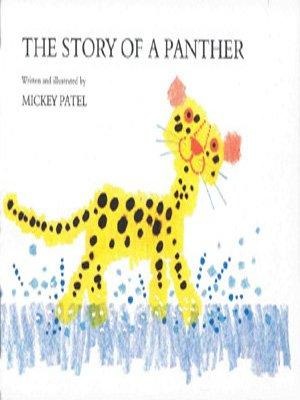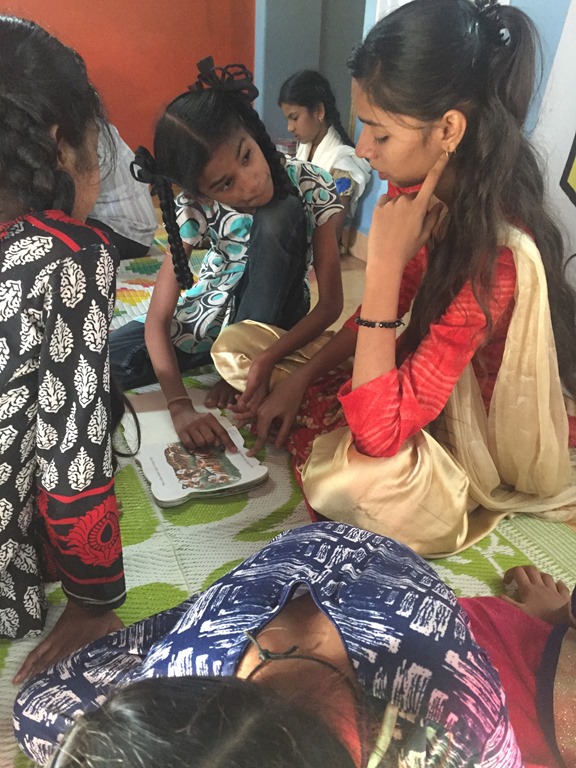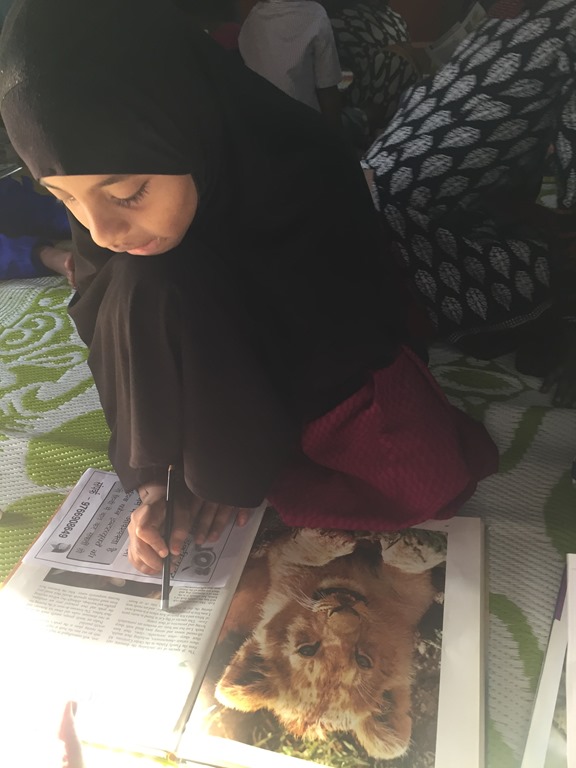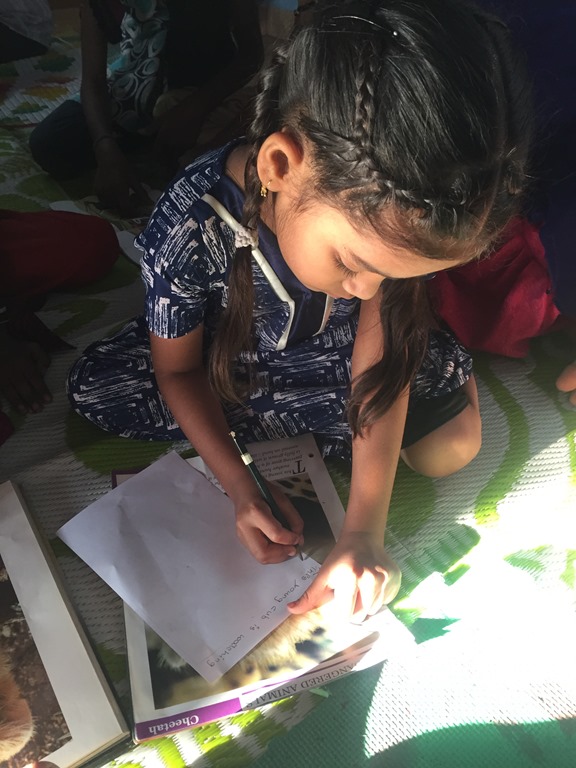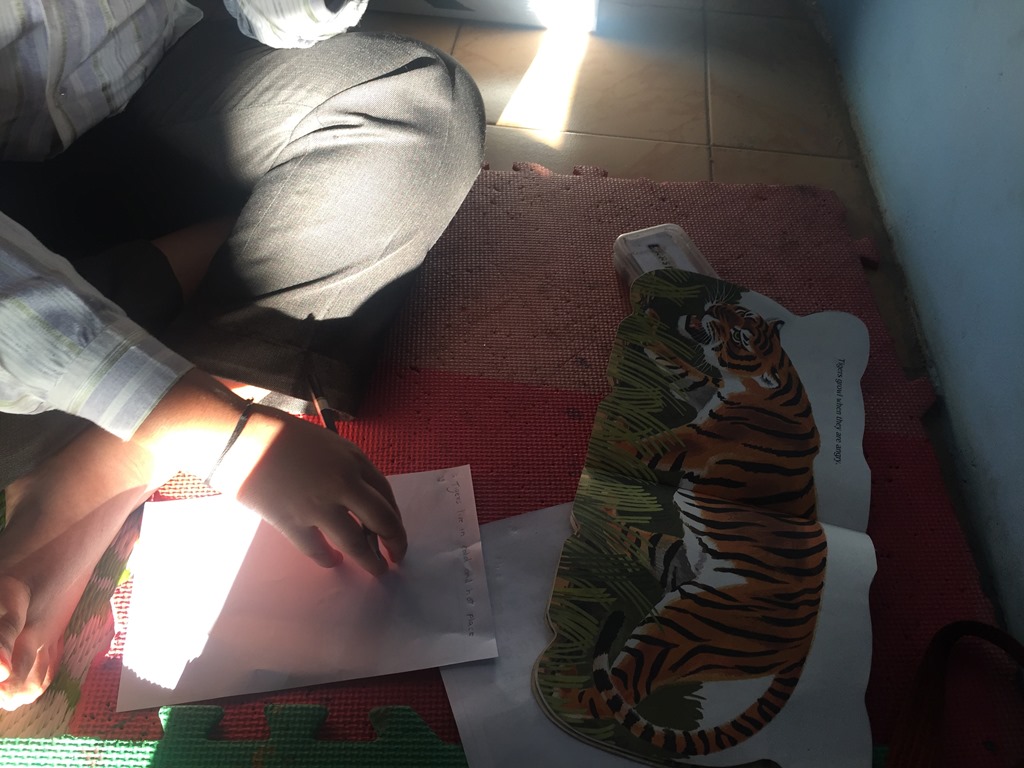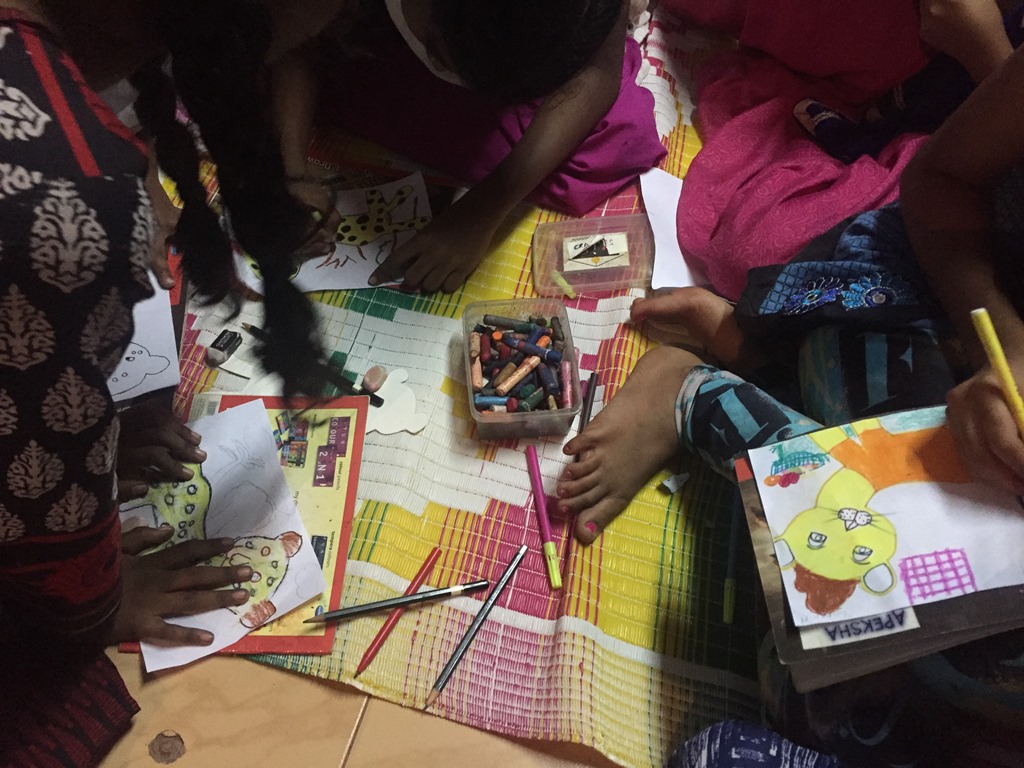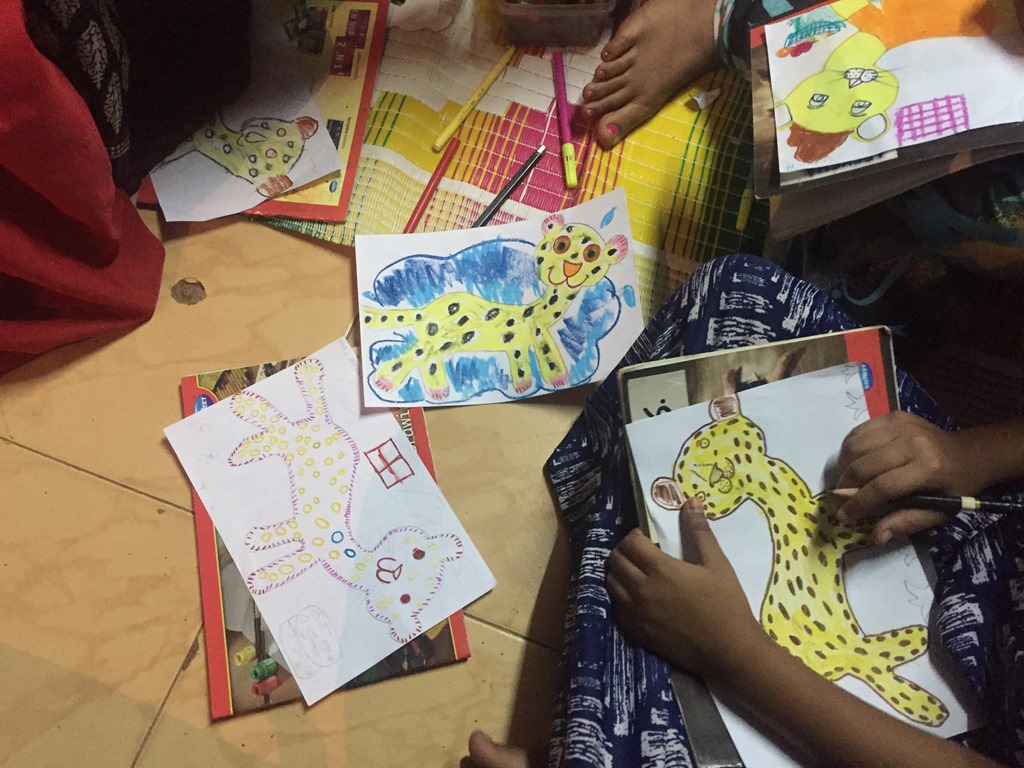Mickey Patel’s Rupa the Elephant is well known to educators who work with books, but I suspect The Story of a Panther is not. This very fine book published posthumously by Ravi Dayal and disturbed by Orient Longman includes the remarkable illustrative style of Mickey Patel, but for me more powerful is the ethical dilemma that the simple story presents. I also learnt in preparing for the book that the story emerged from a sharing of an anecdote by Pulak Biswas with Micky Patel. This immediately made the text a must- do, must – read book. Two of our sub continent’s dedicated children’s illustrators embedded in one text.
As I prepared for sharing the story with a mixed age group, I was reminded of earlier conversations with children. How much more blasé children appear to be on the outside.How much more violence, corruption, mixed up feelings of right and wrong are part of our everyday lives and yet the story is relevant today so I had to make it all matter. To do this, I needed the group to identify with the main character, to understand the panther – his motivations, his play, his curiosities as it were.
So I set out to encourage each child to learn something about one of the big cats. Working alone and with texts slightly over their reading level, five of my children pored over understanding some information around cats. Retractable claws – yeh kya hai ? I was asked with consternation. Thankfully we all were familiar with the house cat and quickly this was understood. Juvenile markings ka matlab kya ? We used an example of pre puberty facial hair to confirm that mammals do change and the panther is not unlike what we are familiar with. Play. Kya tiger khelthe hai ? Sirf khathe nahi ? A good set of non fiction pictures showed us animals at play and allowed us to dwell on this for a bit. I thought only domestic animals play, said Khaif confirming that school knowledge alone is not sufficient to understand the world.
Each child re wrote what they knew about cats, panther included in the fact that there are over 30 species of wild cats. After circle time, each child read out their text to the others and answered questions based on the information understood. In a brief 20 – 25 minutes, our group of 12 children were more aware and more engaged in the matter of the panther.
As we listened to The Story of a Panther, we understood the text from the Panther’s point of view. I occasionally paused to bring in the perspective of the human. Why did he run away when he saw the panther? What would you have done? What compels us to act in certain ways and not others? At every pause there were voices raised in answer, thinking with me, talking back, agreeing or disagreeing. The group were already aligned with the Panther, because we had spent time understanding his world. We were immersed in the story when I closed the book before Mickey Patel ends the story and asked the children to tell me what they would have done at a point in the story which included a Very Important Person and a gun.
Suddenly the audience becomes the actors – the co creators of the script and engagement levels swelled. Junaid said he would kill the Panther because that is what people do. But what about you Junaid, I asked. He said if he was alone he would run if there were others he would kill. Ishraf said he would let the Panther go, Nazia said she would keep it as a pet because it wanted to sleep like a person and on it went.
I read out what Mickey Patel created as the end of the story, discussed the moral / ethical dimensions of this ending and asked each child to close the story in a way that would bring them peace. There was unanimous agreement that the story could have ended differently but I pointed out that if it did, we would not have so much to talk and think about and suddenly Anjum looked at me and said, “that is why you chose this book!” and she was right – I love taking books to children that enable thinking. I imagine the fluffy, light stuff is streaming in from other sources. The library can be a place of deeper thinking and engagement and The Story of a Panther is one such text – it opens out and it goes within and after reading it you should not be the same. I was different, so were my children in the library – at least for now.

